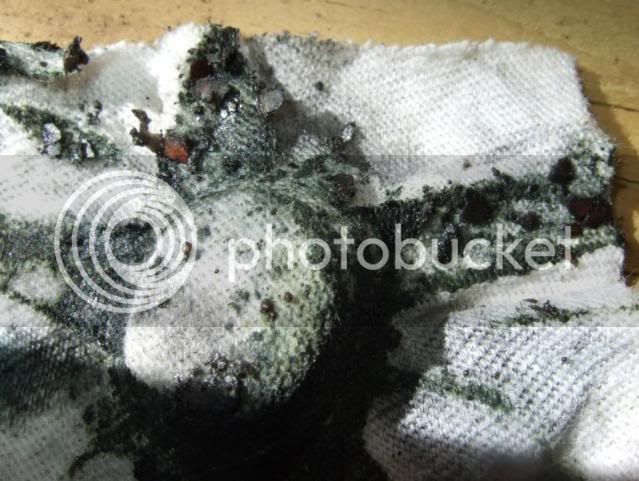The red flecks are unburned sulfur, which occurs when the relative humidity is low on the day the gun is fired. It doesn't matter what size granules of Black Powder you burn that day.
The only way I have ever heard to reduce or remove those "fleck" is a man who, when target shooting, and could get a shot off fairly quickly after loading his gun, used to spit down his barrel's muzzle to ADD Moisture to the barrel in front of the PRB. He said this eliminates the red flecks.
I have not tried that, since the red flecks don't materially affect accuracy of POI of the rounds down range. I DO wipe the bore between shots to pull out just this kind of thing before loading the next powder charge. Not everyone finds it necessary to wipe between shots, however. Here in East Central Illinois, we are between the (Great) Lakes Effect( air currents) and the Gulf( of Mexico) Effect, so that our humidity can change, with wind directions, hourly during Spring, Summer and Fall months. It makes an extended range session a bit more "interesting :shocked2: :haha: ". :hmm: :thumbsup:
Oh, if you want to eliminate those red specks, and much of the other debris pictured on your patch, try using a vegetable fiber wad Over the Powder, and behind the PRB. That tends to increase the pressure and chamber temperature, which burns the powder more completely. You will get a higher MV, too, and you may see the POI of the ball out to 50 yards rise on the target, using the OP wad. However, this may allow you to reduce the powder charge by up to 5 grains( or more in some calibers) to bring the POI back down to your POA, and save you a bit of money on powder, too.
The OP wads may Not work in very cold- subzero-- temperatures, where relative humidity is near ZERO %, but above freezing( 32Degrees F.) I found that the OP wad helps in more efficiently burning the powder in the barrel, and leaving less residue of all kinds. :hmm: :wink:







